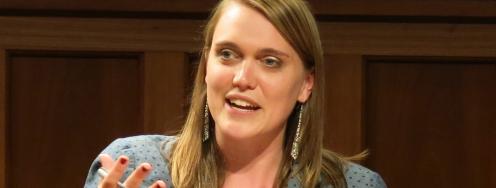Solving the Iranian Nuclear Puzzle
On Tuesday, May 13, Ploughshares Fund President, Joe Cirincione, sat on a distinguished panel of experts at the US Institute of International Peace (USIP) to discuss the “The Rubik’s Cube of a Final Agreement” between the five permanent members of the United Nations Security Council, the European Union and Iran.
The conversation was the first in a three-part series convened by a coalition of nine foreign policy organizations. Thought leaders from Ploughshares Fund, USIP, RAND, the Wilson Center, Arms Control Association, the Center for a New American Security, Partnership for a Secure America, the Center for Non-Proliferation Studies and the Brookings Institution form a powerful consortium on the Iran issue.
The forum opened a conversation with the public on the status of the negotiations, highlighting the indirect but crucial role that domestic constituencies will play in the final outcome. The window for concluding a final agreement is narrow. The Joint Plan of Action (JPA), signed in November 2013 is set to expire July 20. Negotiators from all seven parties have gathered in Vienna, Austria this week to begin drafting an agreement that addresses the alleged weapons dimensions of Iran’s nuclear program. Panelists agreed that unlocking the “Rubik’s Cube” will require increasing Iran’s breakout time—the period it takes to acquire a sufficient quantity of weapons grade material—while providing Iran modest enrichment capacity under strict safeguards.
As part of the panel, Joe Cirincione offered his assessment that a comprehensive agreement on Iran is now within grasp “barring some external event.” After all, no one would have anticipated two years ago, when military action against Iran seemed likely, that the Iranian Foreign Minister and US Secretary of State would negotiate in good faith at the same table. Cirincione noted that setting the duration of a comprehensive deal, capacity of Iran’s enrichment activities and positive inducements for Iran are the three most challenging sides of the “Rubic’s Cube” to align. While the importance of solving the first two obstacles cannot be overstated, the US Congress’ willingness to extend positive inducements through sanctions relief plays a major role in the implementation of a final deal. This matters, becuase only Congress has the authority to lift US proliferation related sanctions imposed on Iran. Iran’s negotiators will likely seek strong assurances that Congress will relieve some sanctions in return for reciprocal steps on rolling back aspects of its nuclear program. In referencing the Congressional debate on New START, Cirincione acknowledged the challenge of molding a bipartisan consensus on a high stakes international issue in an election year. Solving this “Rubik’s Cube” will not come easy but a final agreement on the nuclear program could serve an opening for cooperation on shared interests and chip away at decades of mutual distrust.
Ploughshares Fund supports a path toward a world where nuclear weapons can never be used again. We are proud of our grantees efforts in working to secure a long-term agreement with Iran this summer. Please, tweet your support for taking an Iranian nuclear weapon off the table with diplomacy instead of a counterproductive war.




